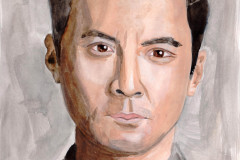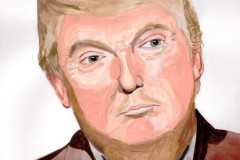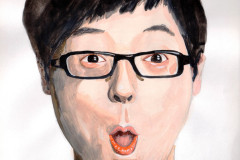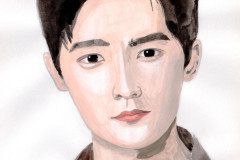Introduction
Creating art that captures witchy vibes is about blending a mystical atmosphere with unique materials and techniques. In this article, we explore how modern mixed media art can help you express the mysterious and magical elements found in witchcraft traditions. You’ll learn how to bring these themes to life while using different materials like paint, paper, cloth, and found objects in your artwork.
We will walk you through ideas and practical tips to create your own modern mixed media pieces inspired by witchy motifs. This approach combines the power of imagination and hands-on creativity to build art that feels both magical and modern. Whether you are new to mixed media or experienced, this guide will inspire you to explore new artistic paths with a witchy twist.
Exploring the Meaning of Witchy Vibes in Art
Witchy vibes in art capture more than just spooky or gothic elements. They tap into a feeling—one of mystery, natural energy, and hidden knowledge. When you look at a piece that gives off witchy vibes, it often feels like it holds an invitation to something beyond the ordinary. This vibe isn’t always dark or eerie; sometimes it can be calm, earthy, or even empowering. It’s this mix of the mystical and the personal that draws many modern artists today.
The origins of witchcraft go far back, shaping how these vibes are expressed visually. Rooted in ancient practices tied to nature, lunar cycles, and symbolic languages, witchcraft symbols carry layered meanings. Think of the crescent moon, pentacles, herbs, or even the figure of a witch herself—all of these have histories that stretch through folklore, pagan traditions, and different cultures worldwide. They are more than decoration; they’re references to beliefs and rituals that hold real significance.
Artists are drawn to these themes for several reasons. Many are fascinated by the sense of mystery and the unseen forces at play. There’s also a strong connection with nature’s rhythms, which seems to resist the fast pace of modern life. Plus, witchy aesthetics often resonate with ideas of empowerment, especially for those exploring identity and spirituality. It’s interesting—while some may approach it from a purely artistic standpoint, others find a personal or even healing aspect in weaving these themes into their work. Why does this mix feel so relevant now? Maybe it’s because it offers a way to slow down, reflect, and reclaim a sense of control or magic in everyday life.
Getting Started with Mixed Media Art
What Is Mixed Media Art
Mixed media art means combining different materials and techniques within a single piece. Instead of sticking to just paint or just collage, you might blend paper, fabric, ink, and even found objects. This creates layers and textures that can’t be achieved with one medium alone. It’s not about neatness or following strict rules. For example, you might glue scraps of old book pages onto a canvas and then splash paint over them, or add thread and tiny charms. The outcome can feel unpredictable—part planned, part spontaneous. That mix gives depth and invites you to experiment. Sometimes it’s hard to call it painting, drawing, or crafting because it’s a bit of all those things.
Essential Materials for Beginners
Getting started doesn’t mean you need an overwhelming stash of supplies. Basic materials often do the trick—and some you may already have around.
- Paper: Scrapbook paper, watercolor sheets, or even old book pages work well. Their textures differ and influence your artwork.
- Paint: Acrylics are usually best for beginners. They dry fast and layer nicely. But you could also try watercolors or inks for different effects.
- Cloth and Fabric: Scraps of cotton, lace, or burlap add contrast. I like to use old tattered pieces—there’s a story in them that feels fitting for witchy themes.
- Found Objects: Things like buttons, feathers, dried leaves, or metal trinkets can be glued onto your piece. They create interest beyond visual texture.
- Adhesives and Tools: Simple glue sticks, gel medium, paintbrushes, scissors, and even a craft knife will do. You don’t need fancy brushes at first.
Starting with a handful of these makes playing with mixed media less overwhelming. You get to focus more on how these pieces interact rather than hunting for materials. Have you tried combining something unusual like string and paint? It’s oddly satisfying.
Choosing Witchy Color Palettes and Textures
Colors That Evoke Magic
When you think of witchy vibes, certain colors usually come to mind. Black, for instance, often symbolizes mystery and protection, but it can also feel heavy or grounding, depending on how you use it. Purple is another color deeply connected to magic—it suggests intuition and spiritual power. Deep green taps into nature and growth, hinting at herbal magic or forest lore. These colors aren’t just decorative choices; they carry meanings that enhance your work’s atmosphere. You might find yourself drawn to one more than the others, or surprised by how combining these hues changes what the piece feels like. Have you ever noticed how a touch of shimmering silver or muted gold can shift the mood? That kind of subtle shift can be part of your palette too.
Using Texture to Add Depth
Texture can quietly influence the mood just as much as color. Rough paper or coarse fabric, for example, creates a tactile sense of earthiness or age, as if the artwork holds secrets beneath its surface. Smooth, glossy finishes might feel too clean for witchy art, but could work if you want to imply something more polished or ritualistic. Think about layering textures—like torn vellum over burlap—to suggest layers of meaning or hidden knowledge. Sometimes, just a hint of texture invites the viewer to look closer. Experimenting with sandpaper or natural fibers has been one way I’ve brought life into my pieces, making them feel more connected to the natural world or a certain wildness. What textures speak to your sense of the mystical? It’s worth playing around to find out.
Creating Backgrounds with Mixed Media Techniques
Layering Papers and Paints
Start by gathering papers with different weights and patterns—think pages torn from old books, scraps of handmade paper, or even delicate tissue. Tear or cut them into uneven shapes and scatter them across your base. Don’t glue them down fully at first; move pieces around until you feel the arrangement—sometimes what seems random ends up feeling just right.
Once satisfied, begin adhering the papers with a matte medium or diluted glue. You want some areas to catch more paint later, others less, so be deliberate but expect some surprises. When the glue dries, add layers of acrylic paint, brushed or splattered. Use muted washes or hints of your chosen witchy colors—dark purples or smoky blues—to bring the layers together without losing the texture underneath.
Try dry brushing or gentle sanding over the paint to reveal paper edges or text. This back-and-forth between covering and exposing creates more visual interest. Patience matters here; don’t rush layering—you want it to feel organic, almost accidental but not quite.
Adding Texture for Mystery
You can build an intriguing surface by mixing in texture paste, fabric scraps, or even thread. Spread the paste unevenly, maybe with a palette knife dragging in diagonal or swirling motions, not flat and smooth. This creates pockets of shadow and depth, offering a tactile sense that invites closer looks.
Incorporate small pieces of lace or thin fabric, pressing them into the paste so they partially sink in but maintain delicate raised edges. Sometimes the faint pattern of fabric can catch light in unexpected ways—creating a subtle glow or shadow that shifts as you move around your piece.
Think about how these textures might evoke feelings of mystery or secrecy, something almost hidden beneath the surface. Experiment with sprinkling fine glitter or salt before your paste fully dries to add an irregular sparkle or grit. You might not know exactly why you like the way it feels under your fingers, but it pulls you into the witchy aura you’re aiming for.
Incorporating Witchy Symbols and Imagery
Popular Witchy Symbols
When you think about witchy imagery, certain symbols pop into mind — moons, stars, herbs, maybe even crystals or pentacles. Each carries its own meaning, often rooted in ancient practices and evolving meanings over time. The moon, for example, is tied to cycles, intuition, and feminine energy. Stars can represent guidance or the vast unknown. Herbs, like sage or lavender, symbolize cleansing and healing. These symbols hold layers of significance, but their meaning in your art depends on what they evoke for you personally.
You might notice how a crescent moon suggests mystery and change, while a full moon feels more powerful or complete. Herbs can be drawn realistically or stylized, and each choice shifts how viewers feel about your piece. I guess what I’m trying to say is—there’s no single “correct” use; it’s more about connection than rules.
Ways to Add Symbols Creatively
How do you bring these symbols into your mixed media work without them feeling stuck or literal? Try layering them with collage—cut out botanical prints or vintage star charts and integrate them into your backgrounds. Stamps are another fun option, especially if you want to repeat motifs or add texture. Hand-drawing symbols lets you play with scale and style; imperfect lines often make symbols feel more personal and alive.
Sometimes, I find that fading a symbol partially into the background invites curiosity. Maybe a moon only half-visible under a layer of paper or paint—this leaves space for interpretation, which is kind of the point of witchy art, right? Don’t hesitate to mix these techniques. Use a stamp here, a drawing there, overlay herbs in collage with painted stars. You’re not replicating tradition but blending it in ways that feel meaningful to you.
Adding Personal Elements and Storytelling
When you create witchy-themed art, it’s easy to get caught up in symbols and motifs, but what really makes a piece stand out is personal meaning. Adding your own story or interpretation can make your work more engaging—both for you and anyone who views it. Think about what witchy vibes mean to you: Is it a connection to nature, a reflection of ancient knowledge, or maybe a feeling of empowerment? Your answer will shape the narrative your art tells.
Including personal items or photos can anchor your artwork in your own experience. Imagine incorporating a pressed flower from your garden or a small photograph that holds significance—these tangible pieces add depth. Even a handwritten note or an old ticket stub can evoke a story that’s unique to you, making the art less like a generic witchy cliché and more like a reflection of a lived moment.
To craft a story with your art, ask yourself what mood or message you want to convey. Is it mysterious and dark? Hopeful? Protective? Maybe a mixture? Sometimes the story will reveal itself as you work, but starting with an intention helps guide your choices. When viewers connect with an underlying narrative, the witchy symbols feel more meaningful. Your art doesn’t have to spell everything out; leaving hints or questions can invite others to interpret and find their own significance.
Experimenting with 3D Elements and Assemblage
What Is Assemblage Art
Assemblage art involves combining three-dimensional objects directly into a mixed media piece. Think of it as a collage but in physical form, where items like beads, small trinkets, or natural elements become part of the artwork itself. This technique adds texture and dimension, creating a tactile experience that flat paint or paper alone can’t achieve. When working with witchy themes, assemblage can bring an eerie or enchanted quality to your pieces—crystals, feathers, dried herbs, or tiny keys can feel like relics from another world. It blurs the line between art and artifact, which fits perfectly with mystical vibes.
Choosing and Attaching Objects
Picking the right objects is a bit like curating a mini shrine. You want items that evoke curiosity or tell a subtle story without overwhelming your composition. Smaller objects often work better—they add detail and invite closer inspection without dominating the overall piece. Here’s what I’ve found helps when selecting and fixing these elements:
- Look for items with personal meaning or symbolic relevance to your theme
- Natural materials like twigs, pressed flowers, or tiny bones often feel more authentic
- Use strong adhesives specifically made for mixed media; hot glue works well but can sometimes be messy
- Test placement before sticking to avoid frustration—sometimes a rearrangement feels right after a day or two
- Remember, balance 3D pieces with flat surfaces so the eye has space to rest
Attaching objects can be tricky. You might have to reinforce heavier pieces with wire or even small screws depending on your base. If the attachment method is too obvious, it can pull away from the spellbinding effect you’re aiming for. In my experience, patience matters here. Sometimes it feels like the objects choose their spot more than you do. Do you feel that too?
Using Light and Shadow to Enhance Mood
Light and shadow aren’t just technical tools—they hold the key to giving your witchy art a real sense of mystery and magic. When you play with them, you build atmosphere that goes beyond the surface, inviting viewers into secret worlds. Sometimes a deep shadow can make a simple object feel ancient or enchanted, while soft light might suggest a spell just cast or a spirit unseen.
Think of light as your story’s voice and shadow as its silence. Together, they create tension and space within your piece. To get there, try layering your shading gradually rather than rushing in with heavy strokes—this slow build adds depth. Use highlights sparingly—maybe on a glimmering crystal or the rim of a witch’s hat—to draw focus where it counts. Darken areas around these spots to boost contrast, but don’t overdo it or the charm might get lost in gloom.
Want to suggest glowing magic like moonlight or fireflies? Use subtle washes of white or pale yellow mixed with translucent mediums to mimic gentle, flickering light. Sometimes, just a faint halo around an element does the trick, hinting at energy without overwhelming your whole composition. It’s a delicate balance—too much glow can feel artificial, too little, and the magic disappears.
Finishing Touches and Protecting Your Artwork
Adding Detail and Refinement
When your main composition feels solid but something seems… a little off, this is where fine details can step in. Using thin pens, markers, or tiny brushes lets you draw delicate symbols, intricate patterns, or even subtle textures that hint at spellcraft or moon phases. Sometimes I find a fine white gel pen perfect for tiny highlights that catch the eye just right.
You might want to experiment with layering light and dark lines to create depth around your witchy elements—think about adding faint runes or halos of light. Don’t be afraid to slow down here; these details often become the piece’s magic touch that draws people closer. Of course, it’s easy to go overboard, so step back often and ask yourself if it feels balanced or cluttered. That tension is part of the process, really.
Sealing and Preserving Your Work
Once you’re happy with the details, sealing your mixed media piece is essential. Without protection, delicate inks or pencil lines might smudge or fade, and textures may catch dust. There are different sealants to consider depending on your materials. Spray fixatives work well for graphite or charcoal but can dull shiny acrylic layers. If your artwork has a lot of texture or collage elements, a brush-on varnish might be a better choice to avoid disturbing the surface.
Choosing a matte or gloss finish depends on the vibe you want to keep—matte tends to enhance that mysterious, soft glow, which suits witchy themes nicely. Sometimes I mix them, sealing with matte but adding a touch of gloss on small highlights to make them pop.
Remember, test sealants on a sample before applying to your final piece. Sometimes they react unpredictably, which can be frustrating, yes, but it’s all part of preserving your work without losing its essence.
Sharing Your Witchy Mixed Media Art with Others
Preparing Your Art for Sharing
Presenting your witchy mixed media pieces can feel a bit daunting, but it’s really just about highlighting what makes your work special. When photographing your art, try natural light rather than harsh artificial lighting—it usually brings out textures and colors more true to life. Taking shots from different angles can show details, especially if you’ve layered materials like fabric, paper, or glitter. Sometimes, a close-up tells a story that a full frame won’t capture.
Framing doesn’t always mean expensive or traditional. You might find that simple black or white frames help your art pop, or you might want to experiment with rustic wood or handmade frames that suit the witchy vibe better. The framing choice can either ground the piece or add to the mystical feeling—what feels right for you?
Finding Communities and Feedback
Sharing your witchy creations with others who get the aesthetic can be both encouraging and inspiring. You might look at online platforms where witchcraft and mixed media intersect—places like art-focused Discord servers, Instagram art circles dedicated to spiritual or occult themes, or specialized subreddits. Sometimes, local metaphysical shops or craft fairs host exhibitions, and those spaces can be warm and receptive to magic-inspired art.
Getting feedback is tricky. You want genuine responses, but not everyone knows how to critique art thoughtfully. Try to ask specific questions when you post, like “Does this piece evoke a mystical feeling for you?” or “How do you respond to the colors and textures here?” That can guide the discussion and give you clearer insights.
Sharing your art feels like putting a bit of yourself out there, especially when your work draws on personal symbols or ideas. But those connections—between your vision and someone else’s interpretation—can turn simple sharing into something more meaningful. What kinds of responses surprise you? Do your pieces resonate differently depending on the audience?
Conclusions
Bringing witchy vibes into your mixed media art allows you to explore themes of magic and mystery in a hands-on way. Using various materials and techniques, you can create unique pieces that tell a story or evoke a certain mood connected to witchcraft themes. This approach encourages you to experiment and find your personal style while engaging with symbolic elements.
As you practice and develop your skills, your art will become a powerful way to express ideas and feelings related to witchy culture. Keep trying new materials and methods to deepen your connection with the themes. Your creativity, mixed with these mystical concepts, will open doors to original and captivating artworks.




























